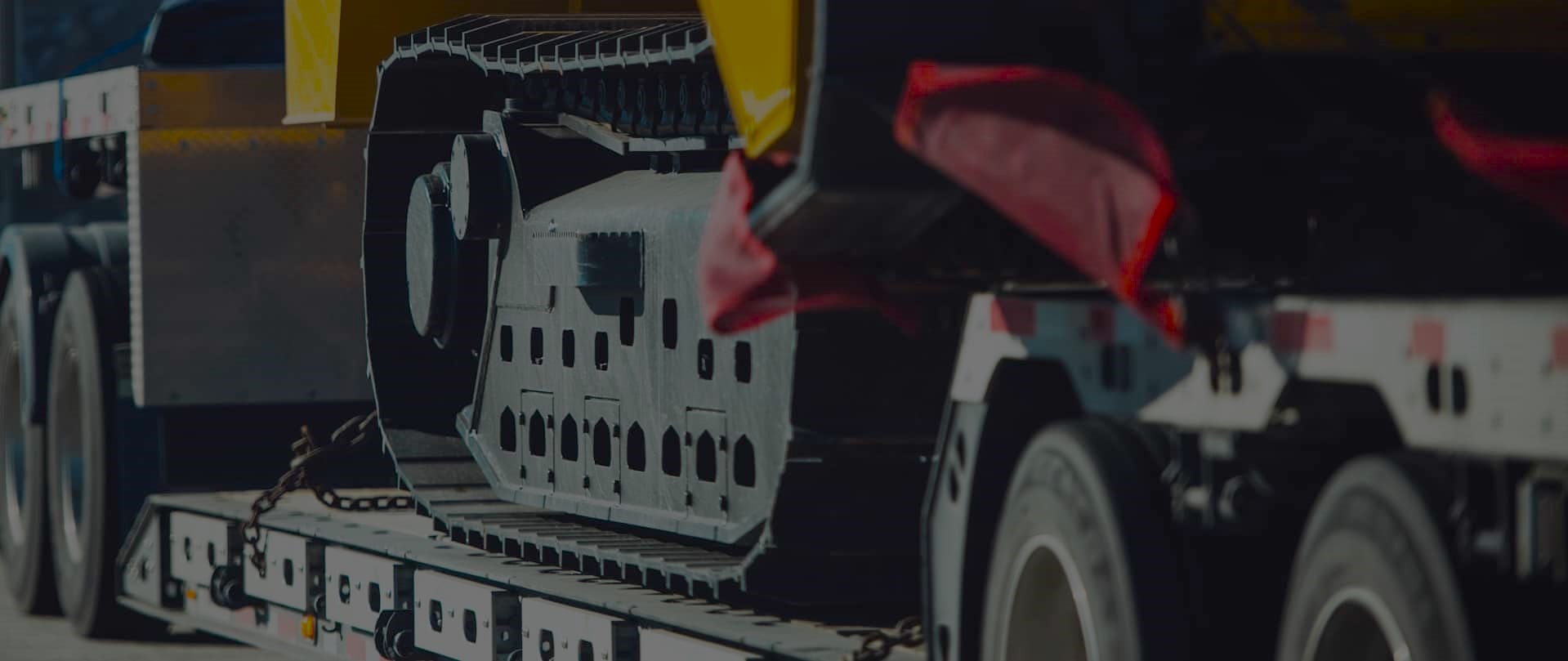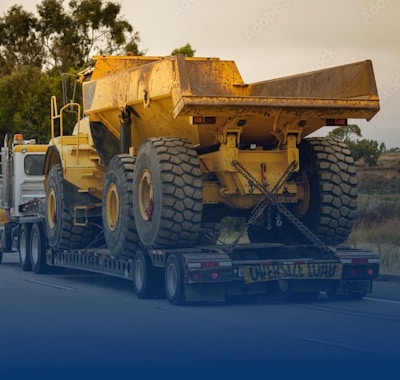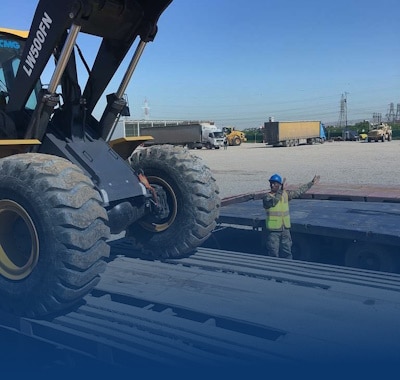Navigating Midwest Bridge Weight Limits for Heavy Loads
Freedom Heavy Haul can offer expedited Pickup and Delivery for any size shipment anywhere in the USA. Contact us today for No Hassle, No Pressure Pricing.
Start smart, stay on schedule. This guide turns complex rules into clear steps so your team can plan each move with fewer surprises. Freedom Heavy Haul specializes in heavy equipment hauling and can help fast-track quotes and permits.
You will learn how to turn legal numbers into practical decisions for each load. We cover permitting, axle plans, postings, and enforcement so your vehicles and equipment cross bridges safely.
Expect friendly, practical advice: simple checklists, route checkpoints, and communication prompts you can use with drivers and permit offices today. Real examples show how specialized carriers add value when limits are tight.
Goal: reduce delays, avoid citations, and protect structures while maximizing what you can legally haul. Read on to get process tips and pro checklists that make every project smoother.
Testimonials: “We trust them to find us the best price possible… personal attention… They deliver for us every time!” — Bilbo Baggins; Tim Allen; John Armstrong; Elizabeth Martin.
Why bridge weight limits matter for heavy haul across the Midwest
Verifying posted capacities before you roll stops surprises and keeps crews safe.
Bridges and culverts are posted when their safe capacity falls below legal allowances or routine permit values. Posting reflects condition, traffic (ADT), detour options, redundancy, and local enforcement. That means a legal permit may still face a posted restriction on a specific crossing.
Why this matters: ignored postings can force shutdowns, fines, or long detours that cost time and money. Routes change as structures age or conditions shift, so confirm postings before each trip.
“Check each posted crossing early in planning to avoid last-minute reroutes and protect crews.”
- Map posted structures on your route.
- Match axle plan to posted capacity or designate a detour.
- Train drivers on approach speed and axle positioning to lower peak effects.
| Posting Factor | Effect on Capacity | Planning Response |
|---|---|---|
| Structural condition | May reduce allowable passage | Conservative axle plans; alternate routing |
| ADT & redundancy | Lower redundancy tightens postings | Stagger trips; avoid peak traffic |
| Detour length & enforcement | Short detours may allow tighter control | Secure permits or escorts when needed |
Legal foundations: Federal, state, and local authority over bridge loads
Federal, state, and local rules form a layered system that decides what your rig can legally carry across any given crossing. Start by treating USC Title 23 as the baseline for route planning.
Key federal thresholds
USC Title 23 sets clear numeric baselines:
| Measure | Value (lb) |
|---|---|
| Single axle | 20,000 |
| Tandem axles | 34,000 |
| Gross vehicle weight | 80,000 |
Formula and local authority
The federal bridge gross weight formula ties allowable W (pounds) to N (number of axles) and L (wheelbase in feet). That formula often determines whether a proposed configuration qualifies for a standard permit.
States can raise or alter thresholds on non-interstate highways, and counties or cities may post reduced ratings when a structure’s capacity is lower than law or routine permit values.
- Always supply accurate axle counts, axle spacing, and weights when you request a permit.
- Verify posted ratings along routes; local postings can override general allowances.
- Document these legal foundations in SOPs so dispatchers and drivers share the same details during planning.
Managing Midwest bridge weight limits with heavy machinery loads
Start by converting legal axle and gross figures into clear choices about which equipment to move and how to rig it.
Translating legal weights into practical heavy equipment transport decisions
Begin with the numbers: record single-axle, tandem-axle, and GVW values from permits and postings. Match those figures against your machine’s as-loaded axle groups before selecting a trailer or plan.
Compare axle group loads and total GVW for each bridge segment. Adjust axle spacing or add dollies to spread concentrated mass. If a posted structure sits on your preferred route, check alternates early to avoid late reroutes.
- Choose trailers and accessories that increase axle count and even distribution.
- Plan fuel, ballast, and attachment placement to trim peak axle effects.
- When possible, remove attachments to lower per-axle forces without delaying the job.
“Treat uncertain structure conditions conservatively and confirm state contacts for permit coverage.”
Keep a living route file that records postings, permits, and driver notes. That file speeds future quotes and helps enforcement see clear documentation, which reduces risk during transit.
| Action | Why it matters | Quick tip |
|---|---|---|
| Compare axle groups to postings | Prevents overstress at critical points | Use measured axle weights, not estimates |
| Distribute concentrated mass | Reduces peak deck effects | Add dollies or shift ballast |
| Confirm permit type | Routine vs. single-trip affects route | Call state office early |
Decoding postings: What bridge load postings mean for your route
Roadside postings exist to protect a structure by capping allowable passage at that point, regardless of statewide rules.
Operating vs. inventory ratings
Inventory ratings show a conservative capacity intended for long-term use. They account for aging and standard safety margins.
Operating ratings indicate the highest single-vehicle capacity a structure can safely carry under normal conditions. Agencies often post values at or below those operating numbers when risk rises.
Condition, ADT, detours, and redundancy as posting factors
Field condition, measured ADT, detour length, and network redundancy all influence posted figures. Poor condition or section loss typically drives postings lower than the operating rating.
- A posting is an owner’s directive that caps allowable passage for that crossing, even if you meet general legal numbers elsewhere.
- Treat posted values as hard ceilings; recalc axle groups and total load to match the sign, not just permits.
- High ADT and limited redundancy reduce posted capacity to protect critical connections and alter your travel plan.
“If a posting changes, pause and verify with the road owner before you proceed.”
Document approach speed and lane position to lower dynamic effects. When signs list multiple categories, confirm every category fits your configuration before entry.
Permits that unlock safe, legal heavy haul movement
Permits are the paperwork that turn plan into permission. Get the right type early, and agencies can vet routes and approve travel before you roll.
Single-trip vs. routine/annual permits
Single-trip permits authorize one movement on a set date and route. Routine or annual permits cover repeated travel along designated corridors. Routine permits often allow normal speeds but may carry hour or holiday windows.
Non-divisible loads and overweight permits
States issue overweight permits when a vehicle or load exceeds legal numbers. These usually apply to non-divisible cargo that cannot be taken apart without damage. Title 23 restricts overweight issuance on interstates, so plan state or local routes when needed.
Time-of-day, holiday, and speed restrictions
Many permits list travel windows and holiday bans to reduce traffic conflict. Speed limits on the permit matter, especially at posted crossings where excess pace raises dynamic effects.
“Include exact axle counts, spacing, and as-loaded weights so the issuing office can validate your route quickly.”
- Provide precise axle data and spacing on every permit application.
- Keep copies of permits in the cab and at dispatch for enforcement.
- Amend permits if the vehicle or load changes to avoid citations.
| Permit Type | Typical Use | Quick Planning Tip |
|---|---|---|
| Single-trip | One-time movement on a fixed date | Book processing time; confirm route |
| Routine / Annual | Repeated travel on pre-vetted corridors | Verify hours and holiday limits |
| Overweight / Non-divisible | Shipments that exceed standard legal values | Use state-checked routes; include full axle details |
| Interstate (Title 23) | Constrained overweight options | Plan alternative state highways when needed |
Routing by the numbers: Using bridge formulas and axle counts
Quantify your rig early: count axles, measure the outer-axle wheelbase in feet, then apply the federal gross formula to get an initial allowable W before choosing routes.
Applying axle count, wheelbase, and spacing to qualify routes
Start by entering axle number (N) and wheelbase (L, feet) into the federal formula to screen a route. For many cases this gives a quick pass/fail for a proposed load.
Adjust axle spacing and groupings to increase allowable gross where equipment permits. Small changes in spacing, measured in feet and inches, can change outcomes enough to unlock a crossing.
Comparing federal and state formulas
Several states use their own formulas or higher GVW on non-interstate highways (examples: Michigan ~164,000 lb; South Dakota ~155,500; Iowa ~96,000; Nebraska ~95,000; North Dakota ~105,500). Compare results and reconcile against posted numbers before you file permits.
- Run federal formula first; treat it as the screening tool.
- Compare state outcomes; note any higher allowances on non-interstate highways.
- Always reconcile formula results with on-the-ground postings and permit reviews.
| Step | Action | Tip |
|---|---|---|
| Measure | Axles, spacing (feet/inches) | Record precisely |
| Compute | Federal and state formulas | Keep reference sheet |
| Verify | Postings and permit rules | Document alternatives |
Axle strategy: Spacing, distribution, and groupings to protect structures
Smart spacing and grouping turn concentrated pressure into manageable, evenly shared force.
Keep axle groups intentional. Use single, tandem, and multi-axle setups to spread a load and lower peak effects on the deck and superstructure. Federal practice treats 20,000 lb per single axle and 34,000 lb per tandem as key benchmarks to respect.
Single, tandem, and multi-axle practical targets
Favor more axles when you can. Extra axles reduce per-axle force and often increase allowable capacity under formulas. Add dollies or jeeps to raise axle count rather than push any one group near a posted ceiling.
Distribution across deck and superstructure
Place heavy components near several axles to cut localized stress on girders and bearings. Check tire and suspension limits so your plan is sound on paper and in the field.
“Use scale tickets and as-loaded axle reports to confirm your assumptions before approach.”
| Strategy | Why it helps | Quick action |
|---|---|---|
| Increase axle count | Reduces peak group force | Add dollies or redistribute trailer |
| Shift heavy items | Improves deck distribution | Place mass near multi-axle groups |
| Extend spacing | Raises allowable gross | Increase outer wheelbase where possible |
| Verify | Ensures safe field performance | Weigh and document axle tickets |
- Train drivers on smooth starts and stops to avoid dynamic spikes.
- Keep a catalog of proven configurations for common equipment types to speed planning.
Vehicle and trailer configurations for machinery loads
Picking the right vehicle setup starts by matching the machine’s footprint to route and permit needs. That early match cuts surprises and speeds approval.
Choosing the right trailer: beam, lowboy, multi-axle, and jeep/dolly options
Select trailers that fit the machine and the bridge plan. Beam and lowboy styles lower the deck height. Multi-axle combos plus jeeps or dollies raise capacity and spread pressure.
- Beam/lowboy: better clearances and a lower center of gravity for tall or top-heavy equipment.
- Multi-axle + dollies: increase axle count when cargo geometry concentrates mass.
- Follow manuals: use trailer specs and OEM guidance to stay within rated capacity and secure permits faster.
Managing width, height, and length alongside weight
Consider dimensions in parallel to any mass plan. Over-dimensional size can trigger escorts, permits, and route changes.
Build a corridor profile that covers underpasses, utilities, and posted crossings. Keep as-loaded axle weights updated after securement. Small shifts can change an axle’s share of the total.
“Standardize preferred trailer types and accessory lists for repeat moves to speed planning and permitting.”
| Decision | Why it matters | Quick tip |
|---|---|---|
| Trailer type | Clearance and capacity | Match to vehicle footprint |
| Dimensions | Route constraints | Map full corridor |
| Axle plan | Distribution & compliance | Use measured axle tickets |
State-by-state nuances in the Midwest you should anticipate
State rules often look similar on paper but change once you trace a route across county lines. Plan each segment against the law, posted signs, and local practice to avoid last-minute detours.
Where statutes mirror 20k/34k/80k
Expect most states to apply the 20,000/34,000/80,000 framework on interstates. That baseline often guides permit reviews and initial route screening.
Where higher GVW may exist off the interstate
Several states allow higher gross vehicle totals on designated highways. Examples include Michigan (up to ~164,000 lb), South Dakota (~155,500 lb), Iowa (~96,000 lb), Nebraska (~95,000 lb), and North Dakota (~105,500 lb).
- Tailor your axle plan to those allowances; spacing rules or equipment categories may apply.
- Local agencies can post crossings below state maxima due to condition or redundancy; county checks are essential.
- Seasonal policies and enforcement focus create practical differences even when statutes match.
| State | Higher GVW Example | What to check |
|---|---|---|
| Michigan | ~164,000 lb on select routes | Corridor designation, axle spacing |
| South Dakota | ~155,500 lb on some highways | Route approval, permit wording |
| Iowa / Nebraska / North Dakota | ~95k–105.5k on non-interstate | Local postings and seasonal rules |
“Keep a quick-reference lane file that flags which states allow higher totals and notes county postings.”
Practical checklist: confirm state statute, verify posted signs, preclear high-risk crossings, and document the applicable rule for each route segment so dispatch and drivers use the same details.
Load rating in practice: How states evaluate bridges you’ll cross
Practical ratings link design math to what you can actually move across a span.
Start by matching your vehicle to rating vehicles. Engineers use distribution factors for common deck types to estimate a bridge load. That gives a first-pass capacity for routine crossings.
From distribution factors to refined 3D analysis on complex structures
When a simple check is marginal, agencies use refined 3D models. These models show how a specific configuration stresses members and bearings.
Refined analysis often removes unnecessary posting by revealing true capacity. It can also confirm that a posted figure was correct.
Field condition adjustments: section loss and condition factors
Inspections feed ratings. Measured section loss, crack mapping, or connection distress reduce capacity.
AASHTO condition factors translate deterioration into numeric adjustments that affect whether your load is permitted.
“Conservative outcomes are common when condition data are uncertain—owners protect critical structures first.”
- Ratings may use allowable stress, load factor, or LRFR methods depending on the state and design history.
- Precise axle data lets engineers compare your vehicles against rating vehicles and validate movement.
- Expect extra lead time when an engineering review or refined model is needed; plan alternatives.
| Step | Why it matters | Quick action |
|---|---|---|
| Distribution check | Fast screening for many structures | Submit axle counts and spacing |
| 3D analysis | Pinpoints capacity on complex spans | Allow engineering lead time |
| Field adjustment | Reflects real condition loss | Share inspection notes and tickets |
Working with permit offices and enforcement with confidence
Start permit applications by confirming every axle count and inch of spacing. Clear submissions reduce back-and-forth and speed approvals. Many states publish guidance that lists qualifying counts, weights, and spacings for overweight permits. Those permits often limit travel to designated routes and set restricted hours or holiday bans.
Submitting accurate axle weights, spacings, and cargo details
Begin every application with verified axle counts, group weights, and exact spacings. Small errors can invalidate a permit or force rework.
Include cargo details that justify non-divisible status. Note any jeeps or dollies used to meet axle and spacing targets.
Coordinating with control agencies for escorts and travel windows
Ask for designated routes when possible; they speed review because structures were pre-vetted for your class of vehicle. Confirm escorts, pilot cars, and police support as required.
Align driver schedules to time and holiday restrictions. Keep control communications open during travel to document any route changes or incidents.
“When enforcement stops occur, present permits and as-loaded axle reports immediately to minimize delay.”
- Keep an in-cab permit that mirrors the as-loaded configuration and route.
- Build relationships with state reviewers to speed clarifications.
- Collect driver and enforcement feedback after each move to improve service.
| Item | Why it matters | Quick action |
|---|---|---|
| Axle & spacing | Determines qualifying criteria | Weigh and document before filing |
| Cargo details | Shows non-divisible justification | Include diagrams and wheelbase in feet |
| Designated route & time | Limits review scope | Request pre-vetted corridors and windows |
Seasonal and environmental conditions that change capacity
Weather can change a crossing’s safe envelope quickly. Weather-driven changes to decks and approaches can force sudden travel restrictions on a planned corridor. That makes seasonal checks a routine part of pre-trip work.
Spring thaw, heat waves, and weather-related deck and road conditions
Spring thaw often reduces effective capacity as saturated soil softens approaches and undermines deck bearings. States may post temporary restrictions on affected roads and highways.
Heat waves and cold snaps affect material behavior and expansion. These shifts change ride quality and how a moving load interacts with a span.
- Wet or icy conditions lower traction and lengthen stopping time, increasing dynamic effects on bridges.
- Some jurisdictions issue seasonal weight restrictions on local roads; check agency advisories before selecting routes.
- Plan travel windows to avoid peak thaw or storm cycles and add time buffers for slower crossings.
- Inspect securement after severe weather; shifted cargo can change axle distribution beyond permit assumptions.
- When in doubt, slow down, increase following distance, or defer the move to protect crews and structure safety.
“Monitor alerts and updated postings before dispatch; conditions can change fast after a storm.”
Safety-first practices for crews, cargo, and structures
Start each trip by checking gear and crew readiness; safety begins before engines run. A focused routine keeps cargo steady, protects structures, and reduces enforcement headaches.
Pre-trip inspections and securement checks
Inspect securement hardware, suspension, tires, and any item that affects distribution. Use a checklist and sign-off so nothing is missed.
Verify axle weights on certified scales. Correct variances before you approach any posted crossing to avoid refusals or fines.
Speed control and crew coordination on posted spans
Follow posted speed directives. Lower speeds cut dynamic amplification and preserve capacity margins.
- Train drivers to keep steady throttle and avoid braking or shifting across a span.
- Re-check cargo after the first 50 miles and before major crossings; settling changes axle shares.
- Use clear radio protocols so escorts and drivers coordinate lane position and approach speeds.
Document checks and keep evidence in-cab; enforcement officials respond better to clear records.
| Practice | Why it matters | Quick action |
|---|---|---|
| Pre-trip checklist | Reduces roadside surprises | Sign and store digitally |
| Certified scale check | Ensures plan matches reality | Adjust ballast or equipment as needed |
| Speed & control | Lowers dynamic effects | Set approach speeds and rehearse |
Documentation details that keep your haul moving
A tidy documentation pack keeps dispatch, drivers, and reviewers aligned during transit.
Permits and in-cab records must match the as-loaded configuration exactly. Keep permit copies, vehicle ID, axle weights, spacing, and the approved route in the cab. If any field changes, update paperwork before departure.
Use route surveys to record clearances, postings, and detours. Take photos, measure tight points, and note a contact name for quick coordination.
Data that backs your plan
Weigh-in-motion (WIM) statistics help characterize typical load patterns and guide conservative decisions for sensitive bridges. Certified as-loaded axle reports are your proof when an inspector asks.
- Store permits and reports in a shared system for instant access.
- Keep contingency route notes and preapproved alternates ready.
- Log post-trip findings to refine future work.
“Provide records promptly if enforcement requests them to avoid delays.”
| Document | Purpose | Quick action |
|---|---|---|
| Permit copy | Shows legal approval | Carry in-cab; update if config changes |
| As-loaded axle report | Proves compliance | Use certified scales; attach to permit |
| Route survey | Confirms clearances | Include photos and contact names |
| WIM / data logs | Inform planning | Reference for sensitive spans |
Trusted partners: Why specialized carriers matter for bridge-limited routes
A skilled transporter smooths permit hurdles and keeps your timetable intact. Partnering with a dedicated team reduces surprises on sensitive corridors and protects crews and assets.
Leveraging experienced heavy haul service and route control
Specialized carriers bring route control expertise, permit know‑how, and practical planning. They balance axle spacing, trailer choice, and permit constraints to keep a load compliant and on schedule.
Responsive service is key. When postings or weather change, a quick callback that updates the route and paperwork saves hours and cost.
Social proof: Customers trust dedicated equipment haulers to deliver
“We trust them to find us the best price possible… personal attention… They deliver for us every time!”
“You always get the straight story… I always call Freedom first… professional service.” — Elizabeth Martin
- Route control expertise threads tricky spans safely.
- Proactive planners propose compliant alternatives early.
- Partners scale from single trips to ongoing programs and handle multi‑state permits.
| Benefit | How it helps | Quick action |
|---|---|---|
| Route control | Protects structures and timing | Request a feasibility review |
| Permit coordination | Reduces approval delays | Provide exact axle and vehicle data |
| Responsive adjustments | Minimizes downtime | Keep a direct point of contact |
Consider a free quote and route review from Freedom Heavy Haul to surface risks before you commit resources. A good partner aligns with your SOPs, documents each move, and keeps work moving safely.
From plan to pavement: A step-by-step best practices route workflow
Start by mapping every corridor detail so your plan matches the road before the truck moves. This short workflow turns planning into repeatable practices that cut surprises and keep work on schedule.
Assess equipment, set the axle plan, and secure permits
Assess the equipment and accessories, then set target gross and per-axle values. Record exact vehicle footprints and as-loaded axle numbers.
Build the axle plan using precise spacing and wheelbase, then validate it against federal and state formulas. Prepare permit applications that list exact counts, weights, and spacing and request designated routes when available.
Verify postings, schedule travel, and assemble documentation
Confirm bridge postings along each route and note any reduced capacity due to condition or ADT. Schedule travel inside permitted time windows and plan escorts or pilot cars.
Assemble permits, route surveys, as-loaded axle reports, and clear driver instructions on posted span speed and lane control.
- Stage equipment and run pre-trip checks to match measured weights to the permit.
- Execute the move with tight communications and monitor conditions for safety.
- Debrief, capture lessons, and update route files to improve future work.
| Step | Why it matters | Quick tip |
|---|---|---|
| Axle plan | Qualifies a vehicle for a route | Measure spacing to the inch |
| Permit | Legal authorization | Attach certified scale tickets |
| Postings check | Reveals reduced capacity | Mark alternates before dispatch |
Ready to roll: Putting these best practices to work today
Ready to roll: make your next move predictable by verifying clearances, weighing axle groups, and locking permits before the truck departs.
Use this playbook to map your route, confirm posted ratings, and size a bridge-friendly load. Match axle spacing and as-loaded equipment specs to legal checks, then brief drivers on approach speeds and safety expectations.
If you need help, engage a specialized heavy haul service for route control, fast communication, and hands-on support. Keep permits, surveys, and axle reports tight to avoid delays and to satisfy enforcement.
Start now: gather cargo specs, confirm dimensions and weight, and request a free quote from Freedom Heavy Haul to validate feasibility and keep work on schedule.







